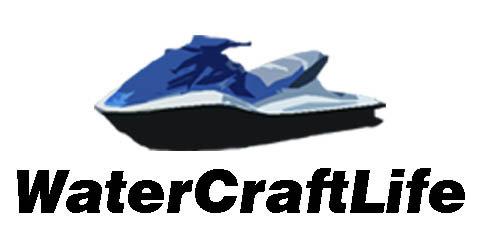
So, you just got a brand-new jet ski, and you can’t wait to get it out on the water and crank the throttle up to see just how fast you get her going. Right? Wrong! As tempting as it can be to immediately test out max speeds and RPMs on a new jet ski, doing so can lead to permanent engine problems in your multi-thousand-dollar new toy.
Like all new cars, boats, ATVs, and motorbikes, jet skis run on engine power and engines need time to break in.
How do you break in a 4 stroke jet ski?
To break in your new, 4-stroke jet ski, first, read your owner’s manual to see how long and at what RPM rates your jet ski should be broken in. Then, take your jet ski out to the water, turn on the engine, and ride around at varying speeds for the recommended amount of time.
Be careful not to push the engine too hard or too long until it has been properly broken in, or you are likely to experience engine problems down the road.
What is a 4-Stroke Jet Ski?
The term “4-stroke” refers to the jet ski’s engine. It describes the number of cycles, or strokes, the piston has to take for combustion to occur and the jet ski to receive power from the engine.
Most people don’t actually know very much about how engines work, but it’s actually pretty fascinating, and having some basic knowledge about how the engine works will make the rationale for breaking in a jet ski make much more sense.
Essentially, each of the 4 strokes is part of a mechanical and chemical process that creates energy that can be harnessed for power. Stroke 1 is the intake stroke, in which air and fuel are taken into the cylinders. Stroke 2 is the compression stroke, where the air and fuel travel through the cylinders and are compressed between the pistons and cylinder heads. Stroke 3 is the power stroke, where the spark plug ignites the fuel and produces power. Stroke 4 is the exhaust stroke, which is when the cylinder releases the combusted gasses. Then, the cycle starts again.
Regarding terminology, “4-stroke” also distinguishes the engine from a “2-stroke” which operates differently. For more information on the differences between 2-stroke and 4-stroke engines, see below.
Why does a Jet Ski Engine Need to Be Broken In?
The way an engine works involves a fairly complicated process of moving air, fuel, and metal parts through various chambers to produce heat and power. In order to get all of these different materials and parts to work well together, they need to be broken in slowly.
Most importantly, the pistons, which is are the cylinders that move up and down in the engine to facilitate combustion, need break-in time to get properly seated. That constant motion produces a lot of heat, and if there are imperfections on the cylinders or the cylinder walls, running the engine too hard, too fast, will create hot spots that wear down those imperfections and cause problems in the engine later on.
By running the engine at lower speeds, you give the pistons a chance to adjust properly and you help the engine create an operating environment with consistent pressure, lubrication, and temperature that keeps the engine running well at higher speeds and prevents overheating.
How do You Break in a 4-Stroke Jet Ski?
Now that you know what a 4-stroke engine is and why you need to spend some time breaking it in, let’s talk about how to break in a 4-stroke jet ski. Compared to understanding how the engine works, knowing what to do to break it in is actually extremely simple.
- Read the Owner’s Manual. The first step in breaking in your new jet ski is to read the owner’s manual. Every jet ski brand and model is a little bit different, so the time and recommended procedure for breaking in the engine may very between jet skis. It’s important to follow the owner’s manual instructions to prevent damage to the engine and/or void any warranties. If you don’t follow the directions, the company may not honor the warranty.
- Don’t Maintain a Consistent Speed. This is really all you need to do to break in your jet ski’s engine. You don’t want to ride the jet ski at the same speed for more than 30 seconds at a time. This also means you should never use cruise control while you are breaking in a new jet ski. You can ride fast, or you can ride slow, but don’t maintain a consistent speed. Some owner’s manuals will have more specific instructions like, don’t run the engine at more than ½ full-speed for the first 30mins, or more than ¾ full-speed for the next hour.
- Keep the Jet Ski in Learning Mode or Touring Mode. It’s a good idea when you’re breaking in your jet ski’s engine to not run it totally at full-throttle. For this reason, if your jet ski has multiple key modes (like all Sea-Doos have, for example), its best to keep it in the lower key mode for at least the first hour or two.
- Let the Engine Cool Down. After riding for a bit at different speeds, be sure to let the engine cool down periodically. Remember, the parts you’re trying to break in are metal, so the heating and cooling softens and hardens the parts until they are seated correctly. Letting the engine cool down is a critical step in helping the pistons adjust and in ensuring that you don’t overheat the engine.
High-Horsepower Engines
Some engines with really high horsepower have a forced break-in period. These types of engines will not allow you to run the engine at full power until you reach certain hour milestones.
How Long Does It Take to Break in a 4-Stroke Jet Ski?
How long it takes to break in a 4-stroke jet ski varies based on brand, model, and year. For example, as recently as 2013, all Yamaha WaveRunners with 4-stroke engines had a recommended break-in time of 10 hours. Now, most owner’s manuals for Yamaha only recommend a break-in time of just over 1.5 hours. Kawasaki has similar recommendations, while Sea-Doo break-in times vary from 5-10 hours depending on the size of the watercraft. These types of variances are why it’s so important to read the owner’s manual for your jet ski before you take it out for the first ride. It’s also always best to be on the safe side and err on the side of a longer break-in time rather than a shorter one.
See below for recommended break-in time for various models:
| Brand | Model/Series | Break-In Time (Per Owner’s Manual) |
| Kawasaki | 2020 Ultra 310 Series, SX-R, STX-160 SEries | 1.5 hours |
| Yamaha | 2020 EX, VX, and FX Series | 1.5 hours |
| Sea-Doo | Spark Series | 5 hours |
| Sea-Doo | GTR Wake, Wake PRO, and RXP X Series | 10 hours (w/automatic engine limits for first 5 hours) |
2-Stroke vs. 4-Stroke Engines
If you have an old jet ski or you’re looking to buy a used jet ski, you may have heard of a 2-stroke jet ski. Jet skis with 2-stroke engines used to be the norm but have been phased out in recent years.
The most basic difference between a 2-stroke engine and a 4-stroke engine is the number of cycles the piston has to make for enough combustion to occur to power the engine. A 4-stroke engine has to make 4 cycles whereas a 2-stroke engine only has to make two, which is more efficient.
However, the way a 2-stroke engine accomplishes this is problematic for larger machines. 2-stroke engines burn gas and oil together and at much faster rates, which is less fuel-efficient and causes more pollution. These engines also wear out much more quickly.
For a more detailed explanation of the differences between these two types of engines and common uses for each type, check out this video.
The main reason jet ski manufacturers have phased out 2-stroke engines is because they pollute our waters. Furthermore, as jet ski design has trended toward larger crafts with more speed, power, and towing capacity, the larger 4-stroke engine became preferable because they don’t burn up oil, and they last much longer.
If you don’t already own a 2-stroke jet ski, don’t buy one, because you will have a really hard time getting it fixed if anything goes wrong. Most dealers don’t even carry the parts for 2-stroke models anymore.
Conclusion
Breaking in a 4-stroke engine isn’t difficult, it just takes some time. Read your owner’s manual before taking the jet ski out on the water for the first time to make sure that you understand how your particular jet ski is supposed to be broken in.
When in doubt, err on the side of caution and give yourself and the engine plenty of time to get used to the brand-new components by riding the jet ski at varying speeds for the first few hours, giving the engine plenty of time to slowly warm-up and cool down, and by not pushing the engine too hard until the new parts have settled in.
The extra time it takes to properly break-in your 4-stroke jet ski will ensure many more years of reliable engine function than if you try to rush the process. Don’t worry, you’ll be pushing 7,000 RPMs and making wake in no time.

